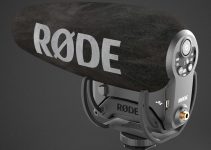If you’ve ever tried to work with Adobe After Effects, you already know what I’m talking about: that deep anger and frustration that comes from watching a laggy preview as your computer struggles to go through after you’ve hit space. Wouldn’t it be nice to have a beast capable of crunching any kind of render without breaking a sweat?
That’s probably what they had in mind over at School of Motion when the team picked up the phone and called Adobe and Puget Systems trying to assemble the best workstation in the world to work with After Effects. Luckily, the latter answered the call!
The first and basic question is one that many would jump straight on, but is actually quite important: Mac or PC? Far more then being a fanboy’s flame the question is not as silly as some may think, but the truth is that once inside the Adobe suite the underlying OS becomes less important, and at the moment if going for raw power, Windows is the road to choose.
That said, it was time to understand what the needs for this machine could have been and getting some of the engineers that work on After Effects was with no doubt a smart move to start with. It helped to lay down a few basic characteristics, someone you wouldn’t even expect.
Anyway, any build begins with a few staple points that are more or less the same for everyone and that we can throw away from the discussion, and we’re talking of case, PSU, input devices and motherboard; with those out of the way it was time to move on to the core of the build: the CPU.
It seems that choosing a CPU aimed at After Effects what counts the most is not the number of cores in the CPU itself, rather than the actual raw computing power of the single core.
It is quite widely known that Adobe’s suite is not so well optimized for recent multi-core processors, meaning that having a higher clock speed is preferable to having many cores, and that leads to the Intel Core i9 9900K 3.6Ghz.
The other most influent component in an After Effects juggernaut is the RAM. Actually, most of the usage of AE comes from the RAM preview, eventually previewing the comp will saturate the RAM and proceed to write on disk, getting more and more slower in the process. So the right choice here is a good amount of RAM, in this case, they opted for 64GB Crucial 2666Mhz sticks.
Going on we have the hard drives. The array that Puget Systems suggests is as follows: a standard SSD as OS disk. A 1 to 4 TB hard drive as a media drive and a final NVMe drive as a media cache disk. Adding the GPU to the mix we learn something we would not expect.
In After Effects multi-GPU configurations aren’t as effective as you would imagine. It’s better to invest in having one very good GPU as the software won’t take advantage of multiple GPUs. In this case, they chose the GeForce GTX 2080.
This is a very tough configuration as for raw power, but will it score enough on Puget’s benchmark? The answer was, as expected, yes! The previous high score of 971.5 was beaten with a whopping 985 score.
The most surprising thing is that it didn’t even cost that much: $4,424 that compared to the $6,599 of the iMac Pro benchmarked earlier, makes it a much more efficient investment.
[source: School of Motion]
Disclaimer: As an Amazon Associate partner and participant in B&H and Adorama Affiliate programmes, we earn a small comission from each purchase made through the affiliate links listed above at no additional cost to you.



